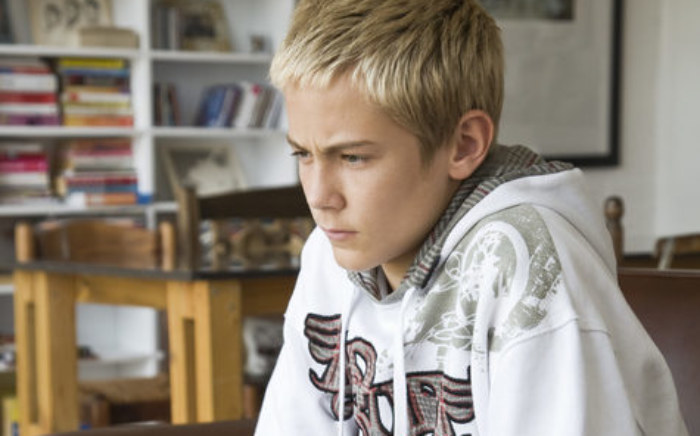Selective Mutism (SM) joined the anxiety disorders category in DSM-5 in 2013. Prior to that, SM was relegated to terms such as elective mutism and aphasia voluntaria, reflecting the inaccurate attribution of being volitional. SM affects approximately 1 in 140 young children and is highly comorbid with, but distinct from, social phobia (SP). Eighty percent of patients presenting for treatment are 8 years old or younger. The modal child with SM completely avoids talking to children or adults in school and community settings, and experiences highly restricted and reluctant speaking in other settings and with other people as well. We coined the term “contaminated” to describe these rigid limitations in verbal engagement. The adverse impact on family relationships is often quite stressful. Untreated child anxiety confers significant risk for later impairment.
Children with SM vigilantly scan the environment to make sure that they are not accidentally overheard and to protect their zones of silence. Onset is almost universally insidious and is associated with high behavioral inhibition. Nearly 75% of children with SM have one or both parents report a history of impairing SM or SP symptoms when they were younger. Conceptually, it is thought that parent and child anxious predispositions, along with well-described anxiogenic parenting styles (i.e., lower warmth, higher control), potentiate the onset of SM. SM is maintained by a cycle of negative reinforcement where both the child’s and parent’s anxiety are lessened through the removal of the aversive condition, i.e., expectation to speak, when the adult rescues by talking for the child, removing the expectation, or prompting in a way that pointing, nodding, or gesturing will suffice to communicate.
We have argued that cognitive-behavioral approaches (CBT) are contraindicated for young children with anxiety, including SM, both in the assessment and treatment phases by dint of their nascent stages of abstract reasoning and cognitive development. Anxious youth less than 7 years old without SM cannot access the meta-cognitive skills required for cognitive restructuring, for example. SM further complicates the picture such that even if they could conceptualize the irrational thoughts, they can not articulate them due to the SM. CAMS and POTS studies, as examples, only went down to age 7. The POTS-Jr study while extending downward age-wise, did so with the extensive use of parents in both treatment arms. We, therefore, approach SM instead from a purely behavioral perspective (BT).
In 2007, our team introduced a standardized behavioral assessment protocol (SM-BOT) to establish a baseline of parent-child verbal interactions with and without the presence of a confederate, using an A-B-A-B design. Our intake avoids the therapist asking any questions at all at any point in the assessment phase – not because we want to collude with the child in avoidance (i.e., enabling), but because we can’t afford for them to establish a mute-based relationship with us. The SM-BOT was adapted from the baseline observation protocol of Parent-Child Interaction Therapy (PCIT). The SM-BOT provides us a proxy for the degree of contamination and severity. Since the confederate begins using evidence based relationship enhancement techniques, we also have an initial litmus test of the child’s response to the BT.
There is significant consensus in the BT community about necessary treatment elements for SM including the systematic fade-in of a new talking partner to a contrived, in situ parent-child talking situation, using copious amounts of external reinforcers contingent on successive approximations of talking (i.e., shaping response percentage, response latency, audibility, and later shaping initiations and manners). Parents and therapists in our paradigm are taught skills in two phases: a child directed, relationship enhancing phase purely devoid of prompts to speak (CDI) and an adult-led verbal prompting phase (VDI) where only forced-choice and open ended questions are allowed as prompts; yes/no questions are avoided as they pull for nodding. Adults work to achieve mastery of CDI as they are simultaneously taught VDI skills to prompt, monitor, and reinforce speaking in progressively more public in vivo situations. Adults are conceptualized as the agents of change in this paradigm, with less reliance on the therapist to guide the child’s “brave talking” exposures.
We are meticulous in shaping generalization by changing only one variable at a time, i.e., either person, place, or activity, lest we a) have an unsuccessful exposure or b) be left not understanding which aspect of the exposure was the “deal breaker.” Our training model for the adults is based on overlearning, thought to enhance performance in high arousal states. Anyone who has worked with children with SM will tell you when they are avoiding it is certainly a high state of arousal for the adult.
Dosing of BT for SM has become a fascinating topic, paralleling intensive treatments for OCD and some anxiety disorders. Treatment as usual for SM (i.e., weekly 45-60 min sessions), seems contraindicated when you take into account the number of minutes left for pure exposure work after check-in with the parents (5-10 min), CDI warm-up with the child (10-15 min), and debriefing/homework planning (5-10 min). This doesn’t even take into account the time walking down the street to the local scoop shop or library to increase generalization. Treatment simply takes too long at this pace. The only two published RCTs for SM reported only modest remission after six months of this pacing of treatment. These and our own outcomes made us re-examine the role of BT dosing.
Intensive treatments for SM provide a legitimate alternative to dosing. We have argued that intensive can mean more minutes per session, (e.g., 2-3 hours), more hours per week, (e.g., 15-30 hours), a group format for a week in an analog classroom format, (e.g., 20-30 hours), or working with a family for a week where they live to provide onsite treatment in their home, school, and community. Mighty Mouth, the weeklong analog classroom model that I developed in 2009 is now replicated in seven sites. It gives youngsters hundreds of trials of successful talking in a week.
We also conceptualize the adjunctive use of medication as a form of intensifying treatment. Along the way, we developed outcome benchmarks that guide our collaboration with families as to when adding medicine makes sense. Most children in a well executed BT intervention will be talking to a trained keyworker with the parent already faded out in 3 sessions, talking with that person in a new environment by session #5, have faded in another adult in the next session, and faded in peers in one or two more sessions. By session #10, we full expect to be talking with the child in a school setting, with new people, using a variety of games, even if not fully faded into the regular school day. Intensifying the dose allows this to happen in 2-3 days rather than in 10 weeks. Admittedly, many practical matters need to be dealt with, but these are usually surmountable barriers.
We are committed at this point to the BT model of parents and teachers as the agents of change for young children with anxiety disorders such as SM. A Centers for Disease Control meta-analysis, in a slightly different context, concluded that there is no substitute for live coaching of an adult to mediate change in a child. We creatively use inexpensive bug-in-ear and Internet technology to train these non-therapist adults. This model helps us address our scalability and sustainability issues. In 2015, we also developed and launched a free online e-course for parents, teachers, and therapists to increase not only their knowledge but there skills in treating SM: www.selectivemutismlearning.org. Beta testing data confirmed ease of use for novice learners and content validity as rated by treating professionals.
SM provides the creative and inquiring behavior therapist an amazing opportunity to challenge assumptions and innovate, as even the good CBT and BT TAU models for older children or children who speak to the therapist don’t apply to our modal patient ~ a 4 year old who can’t talk to you!









